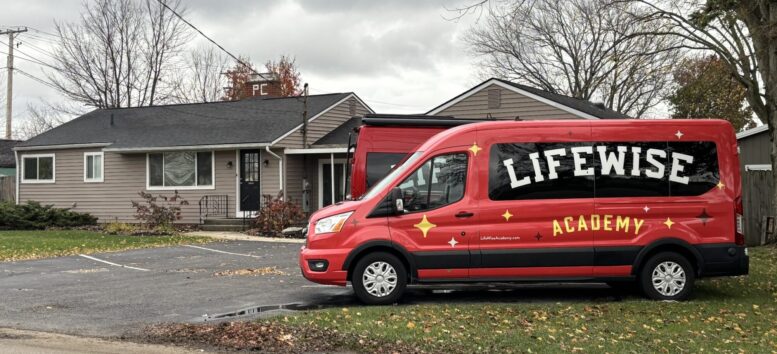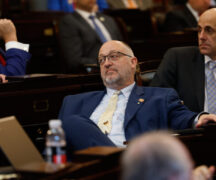BY MEGAN HENRY
Ohio Gov. Mike DeWine has signed a bill into law that will require school districts to create a mandatory religious instruction release time policy and require educators to out a students’ sexuality to their parents.
The law will take effect 90 days after DeWine signed the bill.
Ohio lawmakers passed House Bill 8 during the final day of the lame duck session in 2024 and LGBTQ advocates called on DeWine to veto the bill.
State Reps. D.J. Swearingen, R-Huron, and Sara Carruthers, R-Hamilton, introduced H.B. 8. Supporters called the bill the “Parents’ Bill of Rights” while opponents called it the “Don’t Say Gay” bill, due to its similar language to Florida’s ‘Don’t Say Gay’ law that passed in 2022. (BGIN note: State Senator Theresa Gavarone, R-Bowling Green, and State Representative Haraz Ghanbari, R-Perrysburg both voted in favor of the bill.)
The bill requires public schools to let parents know about sexuality content materials ahead of time so they can request alternative instructions.
GET THE MORNING HEADLINES.SUBSCRIBE
It also prohibits any sexuality content from being taught to students in kindergarten through third grade. H.B. 8 defines sexuality content as “oral or written instruction, presentation, image or description of sexual concepts or gender ideology.”
This bill is one of a few anti-LGBTQ bills that became law during the most recent General Assembly.
This new law strengthens Ohio’s existing law around religious release time by creating a mandate. Currently, Ohio allows school district boards of education to make a policy to let students go to a course in religious instruction during the school day, but this now becomes a requirement for Ohio school boards.
“Parents, not government bureaucrats, should be making healthcare and education decisions for their kids,” Center for Christian Virtue President Aaron Baer said in a statement. “H.B. 8 protects children by safeguarding parents’ rights to make important decisions for their children.”
The United States Supreme Court upheld religious released time laws during the 1952 Zorach v. Clausoncase, which allowed a school district to have students leave school for part of the day to receive religious instruction.
Religious release time instruction must meet three criteria: the courses must take place off school property, be privately funded, and students must have parental permission.
LifeWise Academy, a Hilliard-based religious instruction program, already enrolls students in about 160 Ohio school districts and celebrated the governor’s signing.
“All Ohio families have the freedom to choose off-campus religious instruction during school hours for their students,” LifeWise said in a statement.
Two central Ohio school districts, Westerville and Worthington, rescinded their religious release time policy last year. Both districts formerly allowed LifeWise Academy to take public school students off-campus for Bible classes during school hours.
“We are especially grateful that any local programs that had been put on hold will be able to resume their growing programs and that communities will now have the clarity they need to provide families with the opportunity to choose Bible-based character education for their child,” LifeWise said in a statement.
Also from Ohio Capital Journal:
Ohio GOP threatens to cut school funding, calling spending ‘unsustainable’
BY: MORGAN TRAU
Ohio Republican leaders are looking at cutting spending for public education, calling the current formula — a policy that was created after the state had unconstitutional funding for three decades — “unsustainable.”
House Speaker Matt Huffman, R-Lima, a champion of sending taxpayer dollars to private schools through the EdChoice voucher system, questions how well public schools are spending their money.
Two Northeast Ohio superintendents beg him to reconsider but also question how accountable the voucher system is.
Public money for public schools
The vast majority of Ohio students go to public schools. And for a good education, Parma City Schools Superintendent Charles Smialek says K-12 needs to be fully funded.
Seventy-five percent of PCSD’s funding comes from property taxes, while the rest comes from the state. That’s thanks to the Cupp-Patterson Fair School Funding Plan.
The Ohio Supreme Court ruled in 1997 that the way the state funds schools is unconstitutional, relying too much on property taxes.
House Bill 1, introduced by state Reps. Bride Rose Sweeney, D-Cleveland, and Jamie Callender, R-Concord, in 2021, required $333 million additional dollars a year for K-12 education funding — or about $2 billion overall over the course of six years. READ MORE





